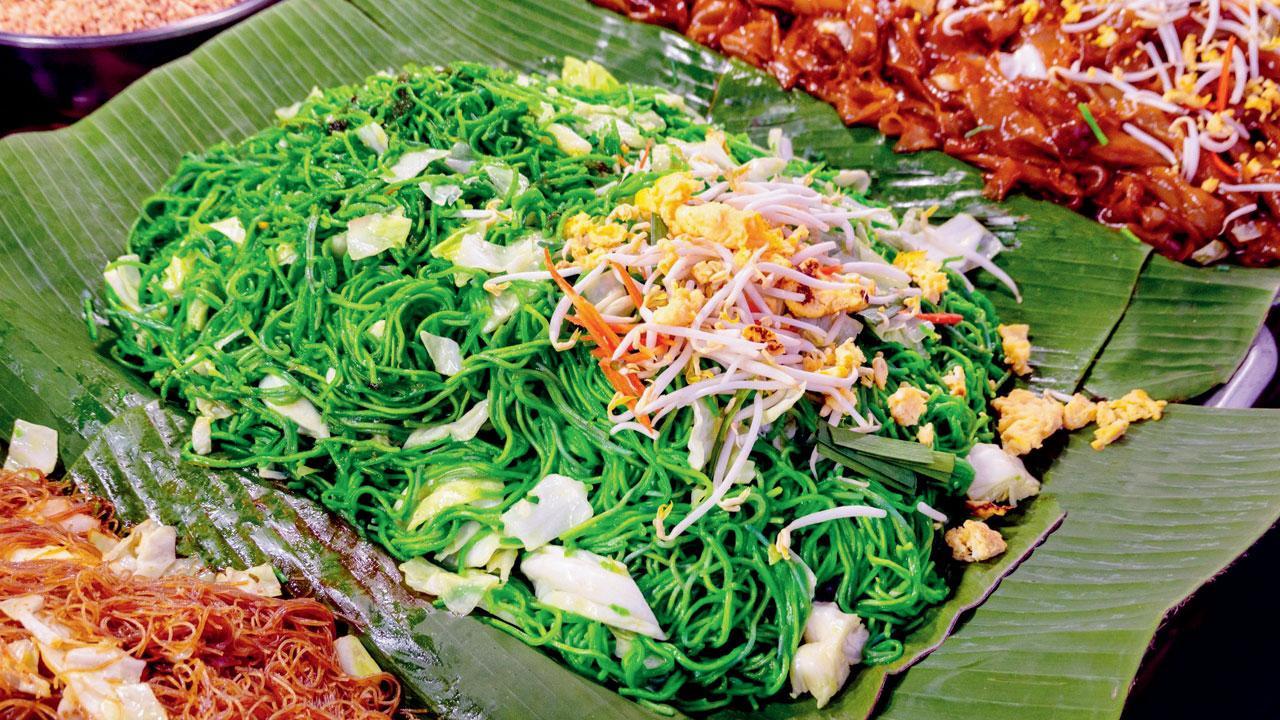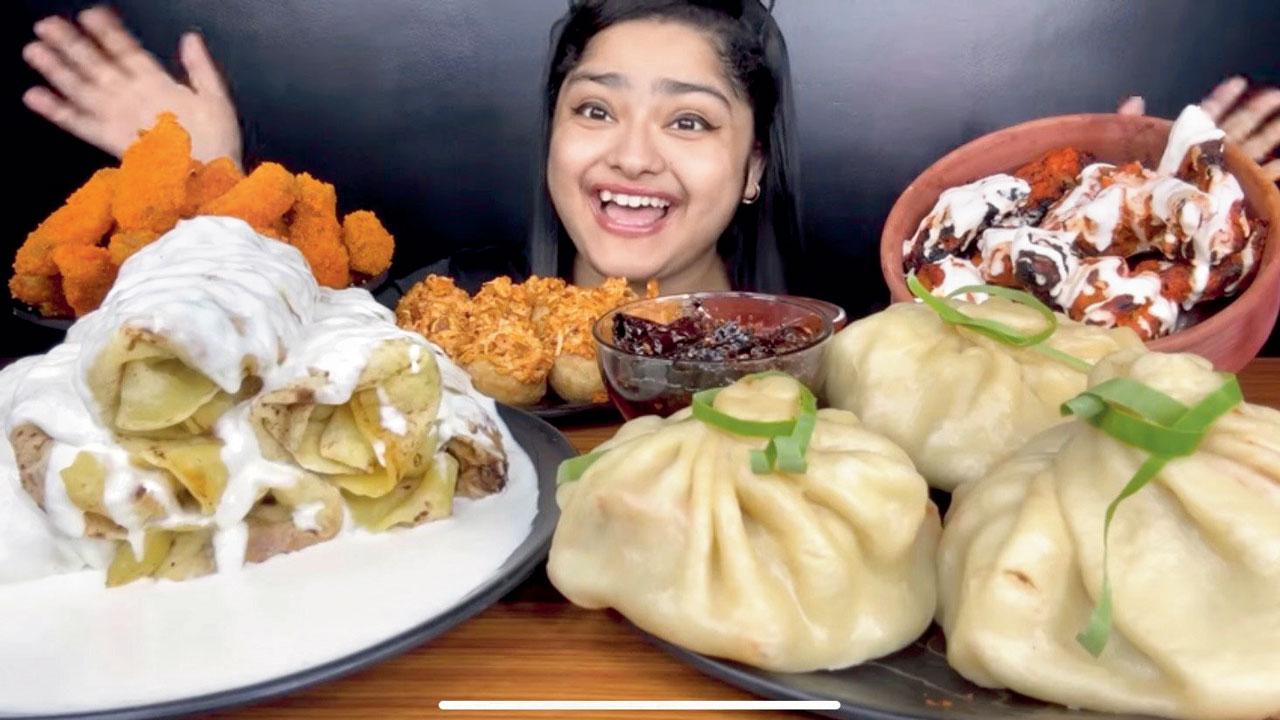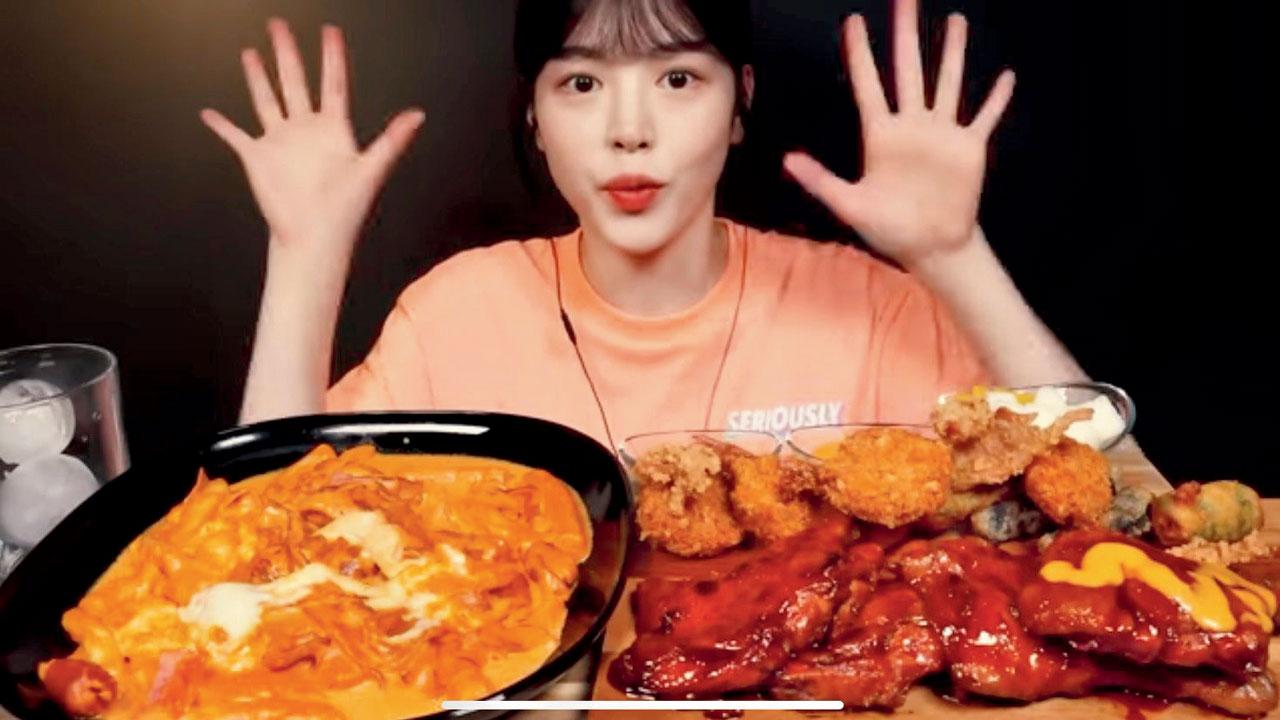Through devilish devouring of scrumptious meals, mukbangs have gained traction for their addictive nature and questionable appeal

Mukbangs means an eating show in Korean
Food shows have always been one of the biggest sources of entertainment for many. From sitting glued to the television, watching a travel host eat through streets of scrumptious food to mindlessly scrolling through cooking reels, food content satiates our visual and hearing senses.
ADVERTISEMENT
Now imagine this: Heaps of noms, from a variety of cuisines from around the world, served on several beautiful plates. What first seems like a treat for the eyes easily morphs into a visible gasp when we see just one person consuming—say all six to eight dishes—with great pleasure and delight. This is where Mukbangs make an appearance. The word in Korean literally translates to “an eating show”, showcasing a broadcaster serving copious of food, followed by them polishing off every last bit of the array of dishes.

YouTube mukbangers MaddyEats
This trend indeed embodies the phrase ‘eating with your eyes’, satisfying your hunger, providing ASMR, or making you hungrier through visuals. The viewership of mukbangs first went viral during the lockdown, with viewers gaping at their screens for hours, but their addictive nature has been a matter of curiosity that has lasted post the COVID-19 pandemic. “I am a huge foodie, and watching mukbang videos gives me a sense of visual appeal and satisfaction without actually eating the food”, says Manasi Thosar, a 55-year-old homemaker and ardent fan.
The concept that began as an traditional food show has been elevated with the addition of ASMR, helping viewers fall asleep while viewing them. “The style of eating with chopsticks is extremely attractive, with different food textures that appeal to both the eyes and ears, at the same time,” discusses Disha Unde, a 21-year-old psychology student and food enthusiast who spends her free time watching mukbangs with her mother.

EatwithBoki (right) devouring a variety of cuisines in short length videos
Mukbangs were originally introduced in Korea in the early 2000s. However, they have now made a whopping comeback with an international audience through YouTube videos. Widely known as Mukbangers, Korean YouTubers EatwithBoki and Hamzy were some of the first creators to go viral on social media. Taking a tradition typically only popular in South Korea, these mukbangers began recording and using mukbangs as a way to interact with their audience, narrating how good the food was, or describing the different nature and varieties of the spread before them. They then moved on to gobbling every last bit of what seems like an endless amount of food, within the span of a 20-minute video.
Soon, Indian mukbangers took this opportunity to give a desi twist to this Korean tradition. They primarily enjoy a north Indian spread, eaten in a manner that can only be described as messily. Though Indian mukbangs are not as widely viewed as Korean ones, YouTubers like Maddy Eats, and The Indian Mukbanger, have gained a commendable fan following with their messy eating and weird food combinations.

Manasi Thosar
However, several viewers have their inhibitions about Indian mukbangs. “I enjoy watching mukbangs as a source of entertainment, but the way Indian YouTubers eat their food and have turned savouring the food into a speed challenge is off-putting,” says Thosar. “Some things are meant to be left how they are; it is not very culturally appropriate to change the narrative of this form of entertainment,” Unde expresses. It is one of those trends that has raised the question of cultural appropriation which has been left unanswered.
Like all other viral trends, this one has also given rise to pranks and reaction videos about the absurd amount of quantities consumed by a single person in one sitting. No matter the amount of judgments passed and controversy raised, this trend that first began with ironic views, has now turned into what might only be called a guilty pleasure.
 Subscribe today by clicking the link and stay updated with the latest news!" Click here!
Subscribe today by clicking the link and stay updated with the latest news!" Click here!







